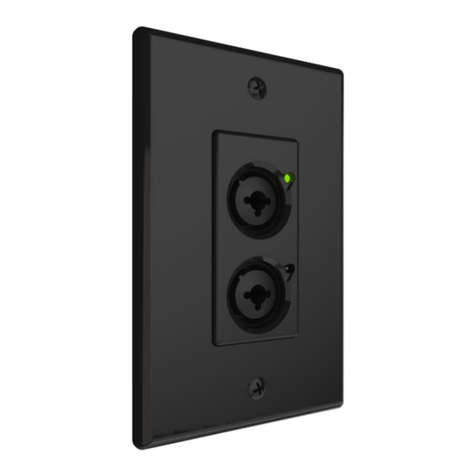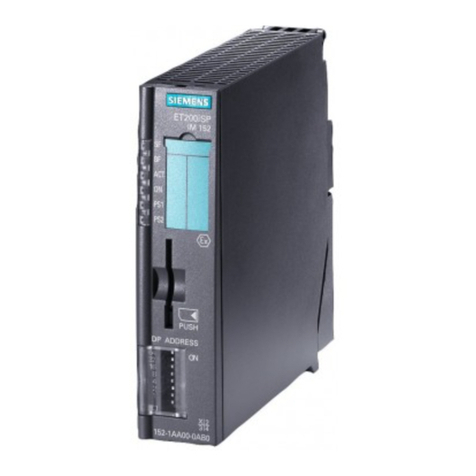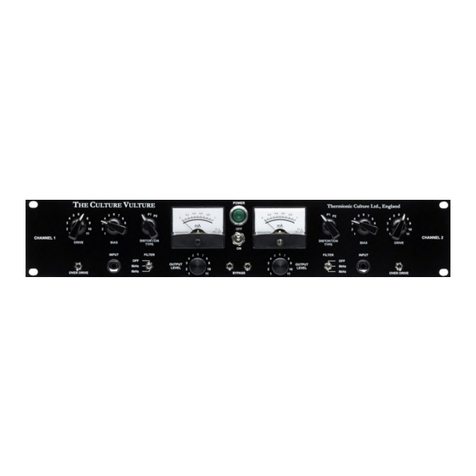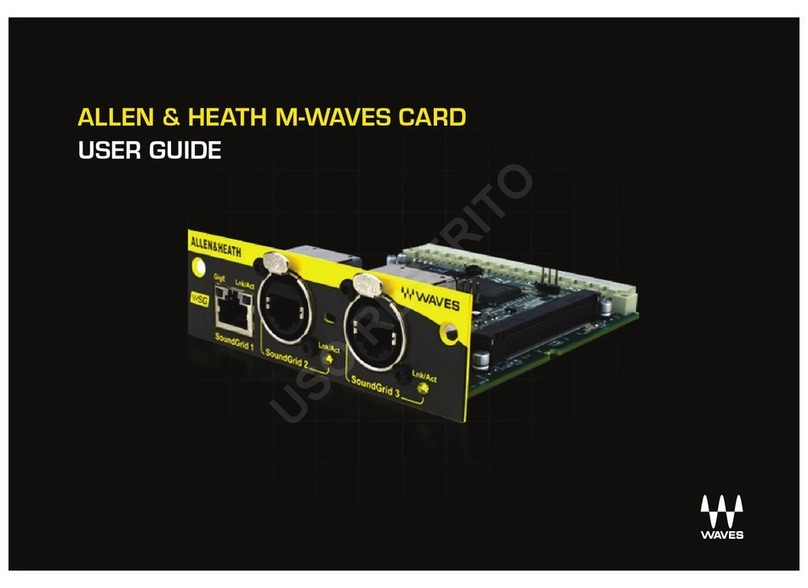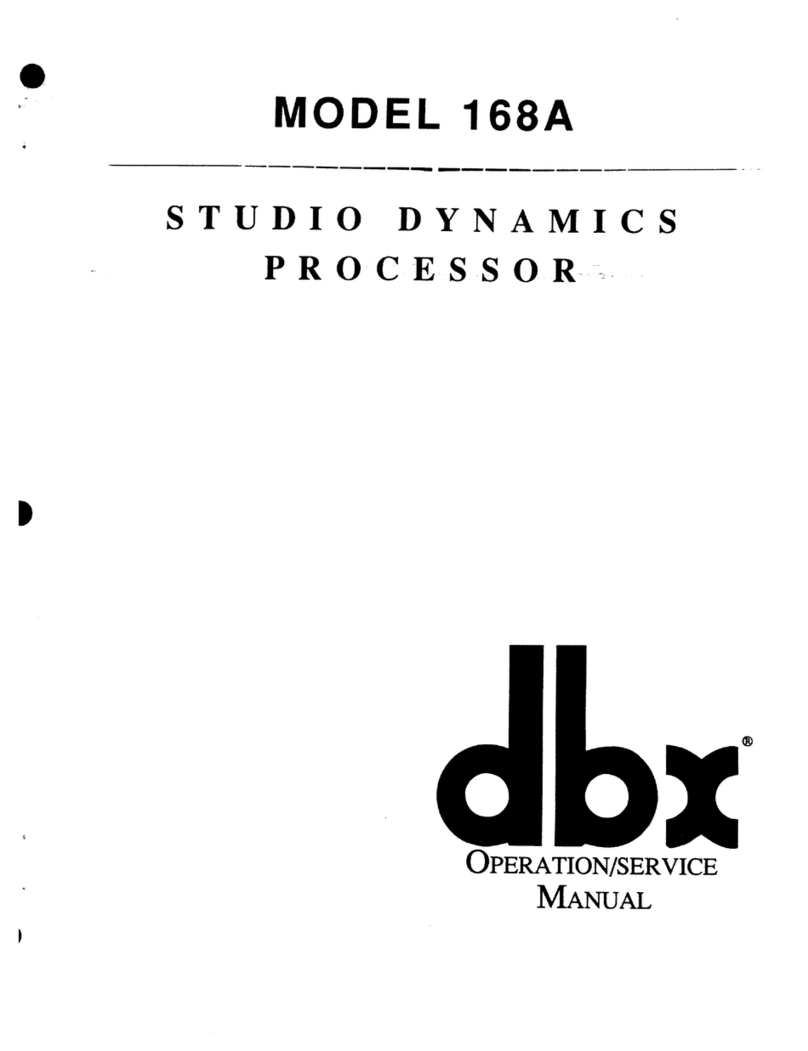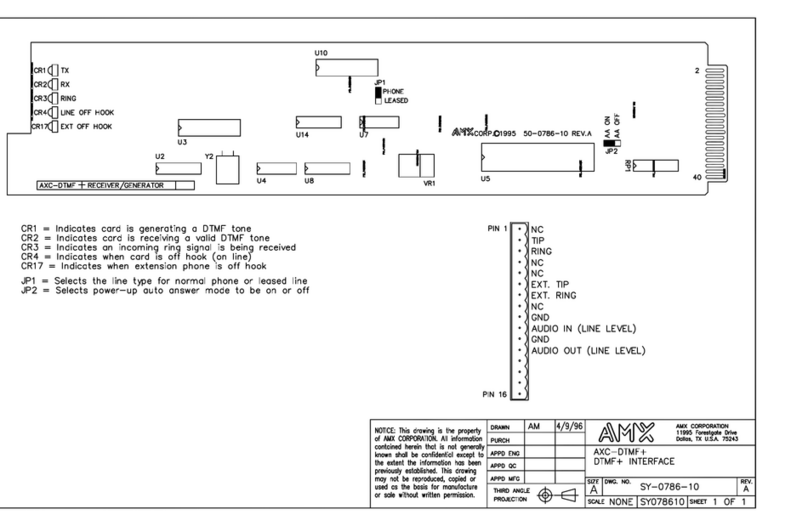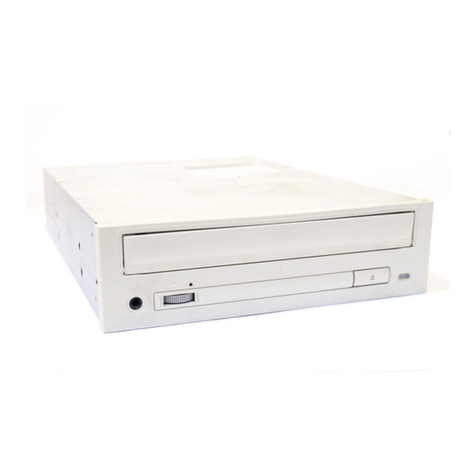Advantech PCL-849 User manual

PCL-849
4-Port RS-232
Interface Card

Copyright Notice
This documentation and the software included with this product are
copyrighted 1998 by Advantech Co., Ltd. All rights are reserved.
Advantech Co., Ltd. reserves the right to make improvements to the
products described in this manual at any time without notice.
No part of this manual or software may be reproduced, copied,
translated or transmitted, in any form or by any means without the
prior written permission of Advantech Co., Ltd. Information provid-
ed in this manual is intended to be accurate and reliable. However,
Advantech Co., Ltd. assumes no responsibility for its use, nor for any
infringements of rights of third parties which may result from its use.
Acknowledgments
PC-LabCard is a trademark of Advantech Co., Ltd. IBM, PC and
PC/XT/AT are trademarks of International Business Machines
Corporation. MS-DOS, MASM, QuickBASIC, Microsoft C and MS-
PASCAL are trademarks of Microsoft Corporation. Intel is a trade-
mark of Intel Corporation. Turbo C and Turbo PASCAL are trade-
marks of Borland International. MOXA is a trademark of Moxa
Technologies Inc.
Part No. 2003084900 1st Edition
Printed in Taiwan October 1998

Contents
Chapter 1: Introduction ................................................... 3
Description............................................................................. 4
Features.................................................................................. 5
Specifications......................................................................... 5
Chapter 2: Hardware Installation .................................... 9
Initial Inspection ................................................................. 10
Card Installation ................................................................. 11
Card Configuration ............................................................ 12
Default Settings ................................................................... 12
I/O Address and Interrupt Setup ...................................... 12
Enhanced Mode .................................................................. 13
Speed Mode selection.......................................................... 18
Chapter 3: Software Installation ................................... 19
Operating Environment Selection ..................................... 20
Driver Installation for DOS Users ..................................... 20
Driver Installation for Windows 3.1 Users ....................... 25
Installation for Windows 95 Environment ....................... 26
Installation for Windows NT Environment ...................... 28
Chapter 4: Wiring ........................................................... 29
Connector Pin Assignments ............................................... 30
Wiring .................................................................................. 31
Appendix A: PC I/O Address Reference ......................... 33
PC I/O Address Usage ........................................................ 34
Appendix B: Quick Reference ........................................ 35


Chapter 1 Introduction 3
1
Introduction
CHAPTER

4PCL-849 User's Manual
Description
The PCL-849 series are four port serial communication interface
cards. Each port can be configured individually to RS-232 using on-
board jumpers.
PCL-849A/849B serial ports are implemented using 16C554 UARTs
which make serial I/O more reliable. For higher performance, 16654
UARTs can be installed in place of the 16C554 to create the PCL-
849+. By buffering data into 64-byte packets before putting it on the
bus, UARTs drastically reduce the CPU load. This makes the
PCL-849+ especially suitable for high-speed serial I/O applications
under multitasking environments and for applications involving high
data rates.
PCL-849 series cards support two operating modes: standard mode
and enhanced mode. In standard mode each of the four port addresses
can be set individually. In enhanced mode, all four port addresses can
be set automatically. The PCL-849+ also supports either shared IRQ
or independent IRQ functions. When an on-board interrupt occurs the
interrupt status register (vector address) indicates which port generat-
ed it. The shared interrupt can be set to most common (extended) AT
interrupts. This simplifies programming, speeds interrupt processing
and frees interrupts for other devices.
Each card comes with DOS drivers and PC-ComLIB, a serial commu-
nications library. PC-ComLIB supports most common languages,
including C, Pascal, Visual Basic, assembly and Clipper. The PC-
ComLIB package also includes the DataScope viewer, terminal
emulator and self-diagnostics utilities for easy troubleshooting and
debugging.

Chapter 1 Introduction 5
Features
vFour independent RS-232 serial ports
vTransmission speeds up to 921.6 Kbps
vIndependent/Shared I/O addresses and IRQ settings for each of 4
serial ports
vWide IRQ selection: 3, 4, 5, 6, 7, 9, 10, 11, 12, 15
vSupports Standard DOS COM1, COM2, COM3, and COM4
vSupports DOS/Windows 3.1 (PC-ComLib), Windows 95, Windows
NT
vSupports surge protection: 2000 VDC (PCL-849B/849+)
vPC-ComLib software included
vLED indicators on each port indicate data flow
vCompatible with standard PC ports: COM1, COM2, COM3, COM4
vOn-board interrupt status register for greater throughput
vComplete RS-232 Modem-control signals
Specifications
· Bus interface: ISA
· Number of ports: 4
· I/O address: 0x0200 ~ 0x03F8
· IRQ: 3, 4, 5, 6, 7, 9, 10, 11, 12, 15
· Data bits: 5, 6, 7, 8
· Stop bits: 1, 1.5, 2
· Parity: none, even, odd

6PCL-849 User's Manual
· UART:
4 × 16C554 (PCL-849A/849B)
4 × 16C654 (PCL-849+)
· Speed (bps): 50 ~ 921.6K
· Connectors: 30-cm male DB-37 to 4 × DB25 male (DTE)
· Data signals: TxD, RxD, RTS, CTS, DTR, DSR, DCD, RI, GND
· Surge protection: 2000 VDC (PCL-849B/849+)
· Power requirement: 250 mA typical 500 mA max. (+5 V),
70 mA typical. 120 mA max.(±12 V),
· Dimensions: 185 mm×98 mm
· Operating Temperature.: 0 ~ 60° C (refer to IEC-68-1.2.3 item)
· Storage Temperature: -25 ~ 80° C
· MTBF: over 135,000 hrs at 25° C, ground-fix environment

Chapter 1 Introduction 7
Figure 1-1: Switch and jumper layout

8PCL-849 User's Manual

2
Hardware
Installation
CHAPTER

10 PCL-849 User's Manual
Initial Inspection
Depending on the option you ordered, in addition to this manual, you
should find the following items inside the shipping container:
• PCL-849(A/B/+) 4-port RS-232 Card
• One 30-cm male DB-37 to four male DB-25 cable
• One diskette with PCLS-802 PC-ComLIB software
• One PC-ComLIB user's manual
We have carefully inspected the PCL-849 mechanically and electrical-
ly before shipping. It should be free of marks and scratches and in
perfect working order on receipt.
As you unpack the PCL-849, check it for signs of shipping damage
(damaged box, scratches, dents, etc.). If it is damaged or it fails to
meet specifications, notify our service department or your local sales
representative immediately. Also notify the carrier. Retain the
shipping carton and packing material for inspection by the carrier.
After inspection we will make arrangements to repair or replace the
unit.
Remove the PCL-849 from its protective packaging by grasping the
rear metal panel. Keep the anti-vibration packing. Whenever you
remove the card from the PC, store it in this package for protection.
Warning! Discharge your body’s static electric charge by
touching the back of the grounded chassis of the
system unit (metal) before handling the board.You
should avoid contact with materials that hold a static
charge such as plastic, vinyl and styrofoam.Handle
the board only by its edges to avoid static damage to
its integrated circuits.Avoid touching the exposed
circuitconnectors.

Chapter 2 Hardware Installation 11
Card Installation
Warning! Turn off your PC’s power supply whenever you install
or remove the PCL-849 or its cables.Static electricity
can easily damage computer equipment. Ground
yourself by touching the chassis of the computer
(metal) before you touch any boards.
1. Turn off the computer. Turn the power off to any peripheral
devices (such as printers and monitors).
2. Disconnect the power cord and any other cables from the back of
the computer. Turn the PC if necessary to gain access to the
cables.
3. Remove the PC’s cover (refer to your user’s guide if necessary).
4. Locate the expansion slots or passive backplane (at the rear of the
PC) and choose any unused slot.
5. Remove the screw that secures the expansion slot cover to the PC
(save the screw to secure the interface card retaining bracket).
Remove the anti-vibration card clamp if supplied.
6. Carefully grasp the upper edge of the PCL-849 card. Align the
hole in the retaining bracket with the hole on top of the expansion
slot. Align the gold striped edge connector with the expansion slot
socket. Press the board firmly into the socket.
7. Replace the screw in the expansion slot retaining bracket. Replace
anti-vibration card holder.
8. Replace the PC’s cover. Connect the cables you removed in step 2.
9. Attach the DB-37 cable to the connector on the bracket. Turn the
computer power on.
The board is now installed in the computer. See Chapter 3 for infor-
mation on cabling.

12 PCL-849 User's Manual
Card Configuration
Each port on the PCL-849 card has a jumper and a DIP switch which
require configuring prior to use. The DIP switch sets the port to the
appropriate I/O address and speed mode. The jumpers set the port's
IRQ.
Default Settings
The board is shipped with default settings. If you need to change
these settings, however, see the following sections. Otherwise, you
can simply install the card. Note that you will need to disable your
CPU card's on-board COM ports, if any, or set them to alternate
addresses / IRQs.
PCL-849 Default Configuration
Setting Default function
JPI IRQ 12
Speed mode 1x
IRQ mode Share
Base address Address 300H
Vector address Interrupt 280H
Interrupt mode Enhance
I/O Address and Interrupt Setup
Next, you will need to select an IRQ (interrupt request) number, and
an I/O base address for the PCL-849.
Model Setup (base address setting)
The card base address can be set up using Mode 1. Please note that
the DIP switch is for mode setting as shown below.

Chapter 2 Hardware Installation 13
Standard Mode
In this mode, each of the four ports has been set up as an address, as
shown below.
Port 1 Ch1 base address 3F8
Port 2 Ch2 base address 2F8
Port 3 Ch3 base address 3E8
Port 4 Ch4 base address 2E8
Enhanced Mode
In this mode, each of the four ports has been set up as an address
individually. Select an address which is not already in use by another
card in the system. If you are installing more than one PCL-849 card
in your system, set the cards to different base adresses. DIP switches
control each card's base address, as shown below.
Port base address (S1)
Base Address A3A4A5A6A7A8
200-21F lllll l
208-227 ¡ll ll l
··········
2E8-307 ¡l¡¡¡ l
··········
*300-31F lllll ¡
··········
3E0-3FF ll¡¡¡ ¡
l: on ¡: off *= default

14 PCL-849 User's Manual
Default Settings
Mode Enhanced Mode
Port 1 IRQ12 Address 300H
Port 2 IRQ12 Address 308H
Port 3 IRQ12 Address 310H
Port 4 IRQ12 Address 318H
The following example shows how to set the base address to 2F8.
The switch sum is set to 2F8: 200 + 80 + 40 + 20 + 10 + 8 (HEX).
Note: On the PCL-849 address line A9 does not appear on the DIP
switch, as it is permanently hardwired to hex 200.
Interrupt Level (IRQ) Setting
(S1, JP1, JP2, JP3, JP4)
The card's IRQ can be set up using S1. Please note that the DIP
switch is for setting the mode as shown below.

Chapter 2 Hardware Installation 15
Independent IRQ Mode (JP1-JP4)
In this mode, each of the four ports can have IRQ channels set
individually. For each port, select an IRQ which is not already in use
by another card in the system. The map of jumpers and ports is
shown below.
Port 1 àJP1
Port 2 àJP2
Port 3 àJP3
Port 4 àJP4
Share IRQ Mode (JP1)
Select an IRQ which is not already in use by another card in the
system. If you are installing more than one PCL-849, set them to
different IRQ numbers. Jumper Bank JP1 controls the card IRQ.
Simply place the jumper on the required interrupt level as shown in
the following figure.
Interrupt Status Register Setup (S1, Vector
address)
This feature on the PCL-849 is utilized in the enhanced mode only.
When data arrives at one of the four ports, it will generate an interrupt
in the interrupt register. The PC software can read this, and identify
immediately which port generated the interrupt. This saves time, and
makes programming easier. When a data bit of the interrupt status
register is set to 0, the corresponding channel is selected to generate
an interrupt. If the bit is 1, then no interrupt is generated. DIP switch
S1 controls the card's interrupt status register, as shown in the follow-
ing figure and table.

16 PCL-849 User's Manual
Interrupt Status Register S1
Bit Function
0 Port 1
1 Port 2
2 Port 3
3 Port 4
4 Not Used
5 Not Used
6 Not Used
7 Not Used
The user may change the interrupt status address via S1. Please note
that the address decoder will occupy a continuous, 16-byte area
related to the switch setting. For example, if you set the switch to
210H, then the address 210H to 21FH will all be decoded. The
various DIP switch settings (S1) for the interrupt status register are as
shown in the table opposite.

Chapter 2 Hardware Installation 17
4A5A6A7A8A tpurretnI
retsigeR
NONONONONOH002
FFONONONONOH012
NOFFONONONOH022
FFOFFONONONOH032
NONOFFONONOH042
FFONOFFONONOH052
NOFFOFFONONOH062
FFOFFOFFONONOH072
NONONOFFONOH082
FFONONOFFONOH092
NOFFONOFFONOH0A2
FFOFFONOFFONOH0B2
NONOFFOFFONOH0C2
FFONOFFOFFONOH0D2
NOFFOFFOFFONOH0E2
FFOFFOFFOFFONOH0F2
NONONONOFFOH003
FFONONONOFFOH013
NOFFONONOFFOH023
FFOFFONONOFFOH033
NONOFFONOFFOH043
FFONOFFONOFFOH053
NOFFOFFONOFFOH063
FFOFFOFFONOFFOH073
NONONOFFOFFOH083
FFONONOFFOFFOH093
NOFFONOFFOFFOH0A3
FFOFFONOFFOFFOH0B3
NONOFFOFFOFFOH0C3
FFONOFFOFFOFFOH0D3
NOFFOFFOFFOFFOH0E3
FFOFFOFFOFFOFFOH0F3

18 PCL-849 User's Manual
Speed Mode selection
The PCL-849 employs a unique speed option that allows the user to
choose either normal speed mode (1x) or high speed mode (8x). This
high speed mode is selected at S2.
Normal Speed Mode
To select the band rate commonly associated with COM ports , such
as 2400, 4800, 9600. . .115.2 Kbps, place the switch as follows.
High Speed Mode
To increase normal mode rates up to eight times, (e.g. if 115.2 Kbps is
selected, the rate can be increased up to 921.6 Kbps), place the
switches as follows.
This manual suits for next models
2
Table of contents
Other Advantech Recording Equipment manuals
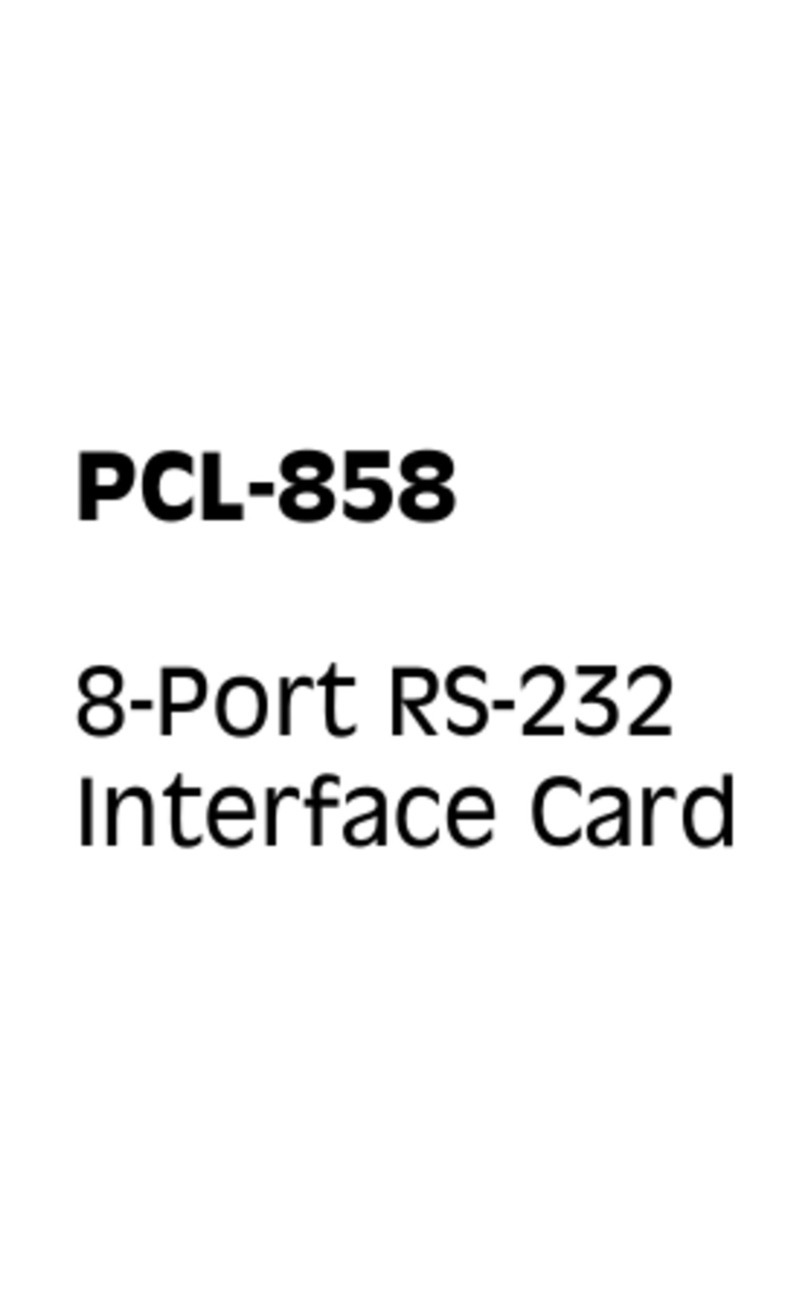
Advantech
Advantech PCL-858 User manual
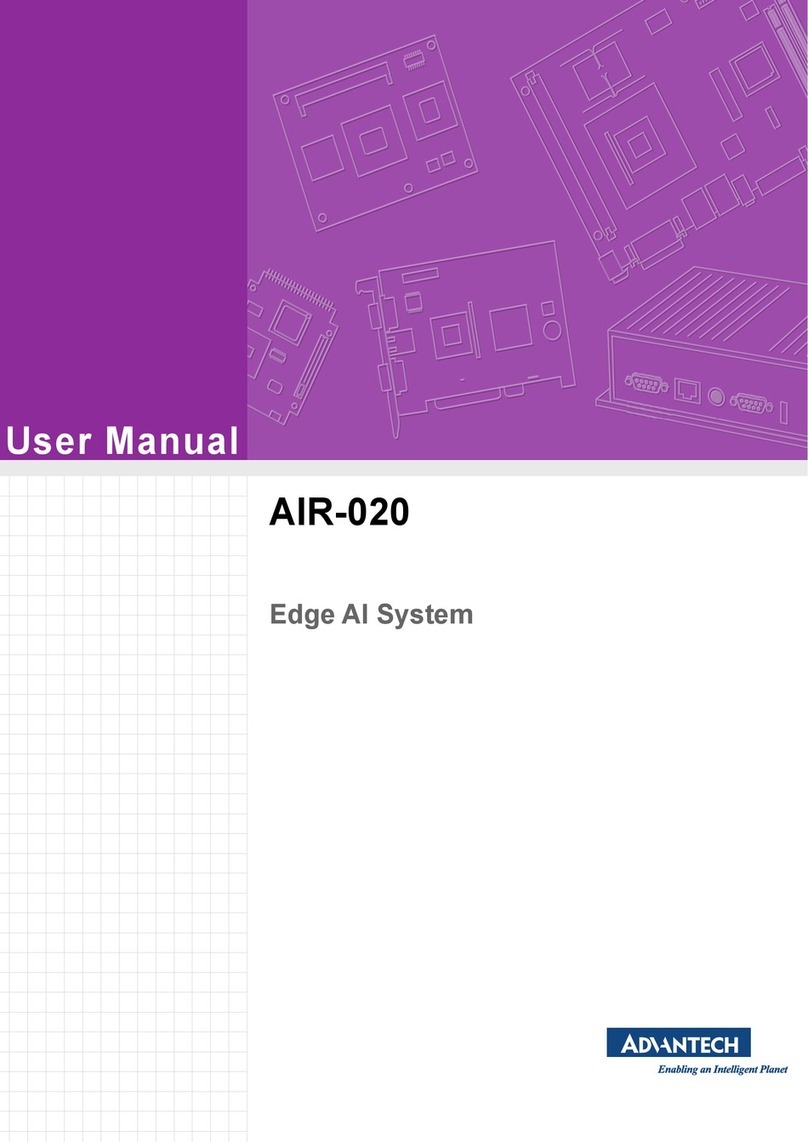
Advantech
Advantech AIR-020 User manual
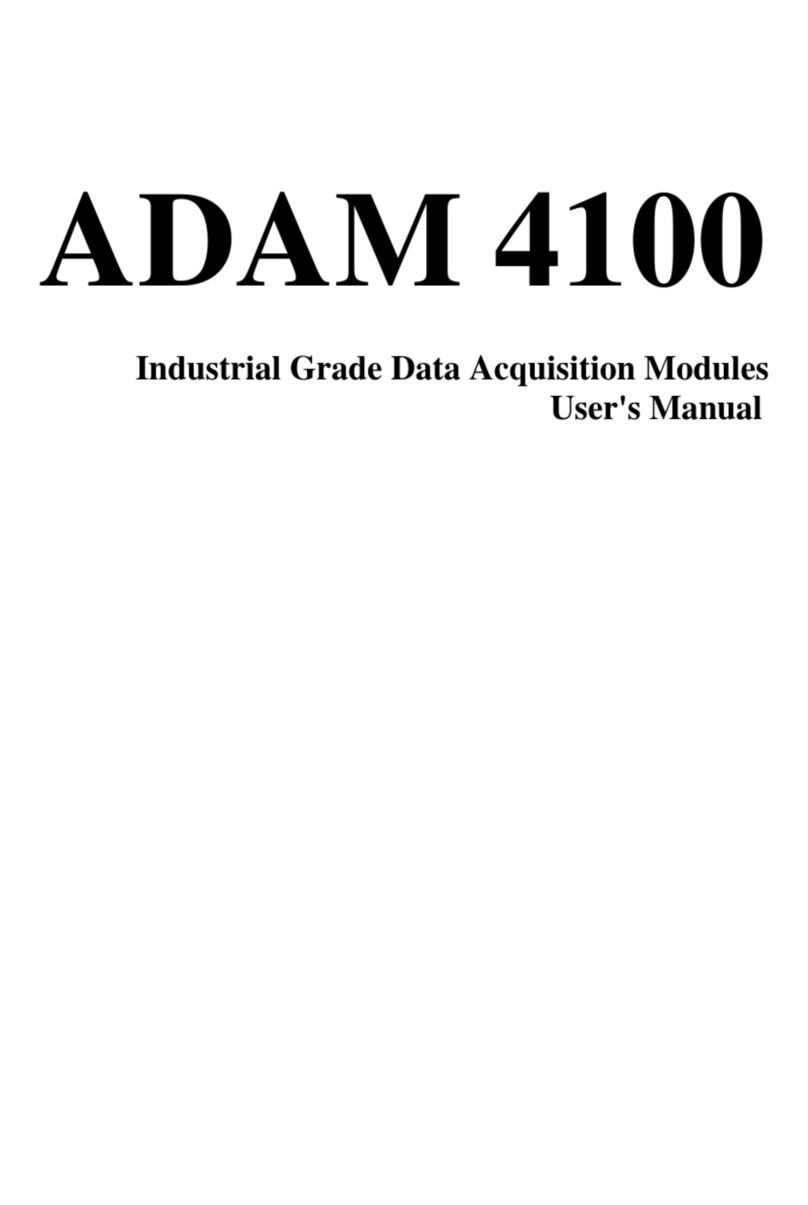
Advantech
Advantech ADAM 4100 User manual
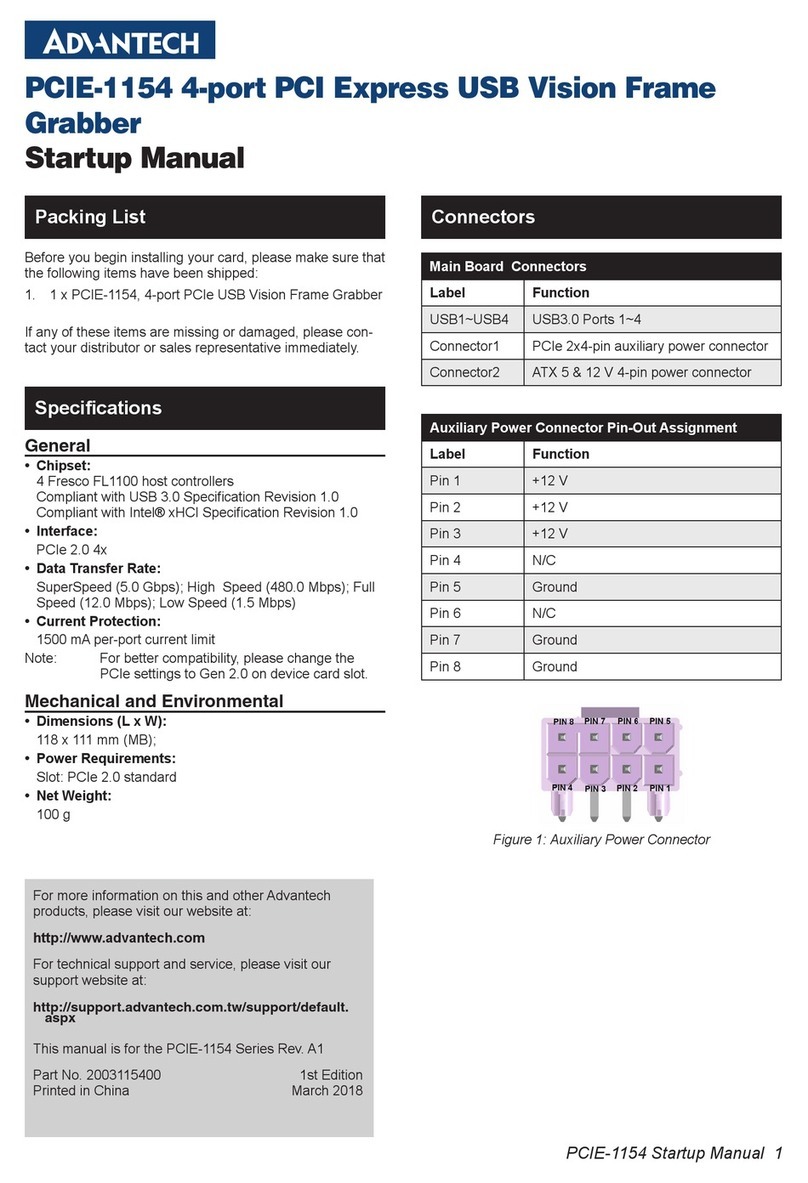
Advantech
Advantech PCIE-1154 Installation and operation manual
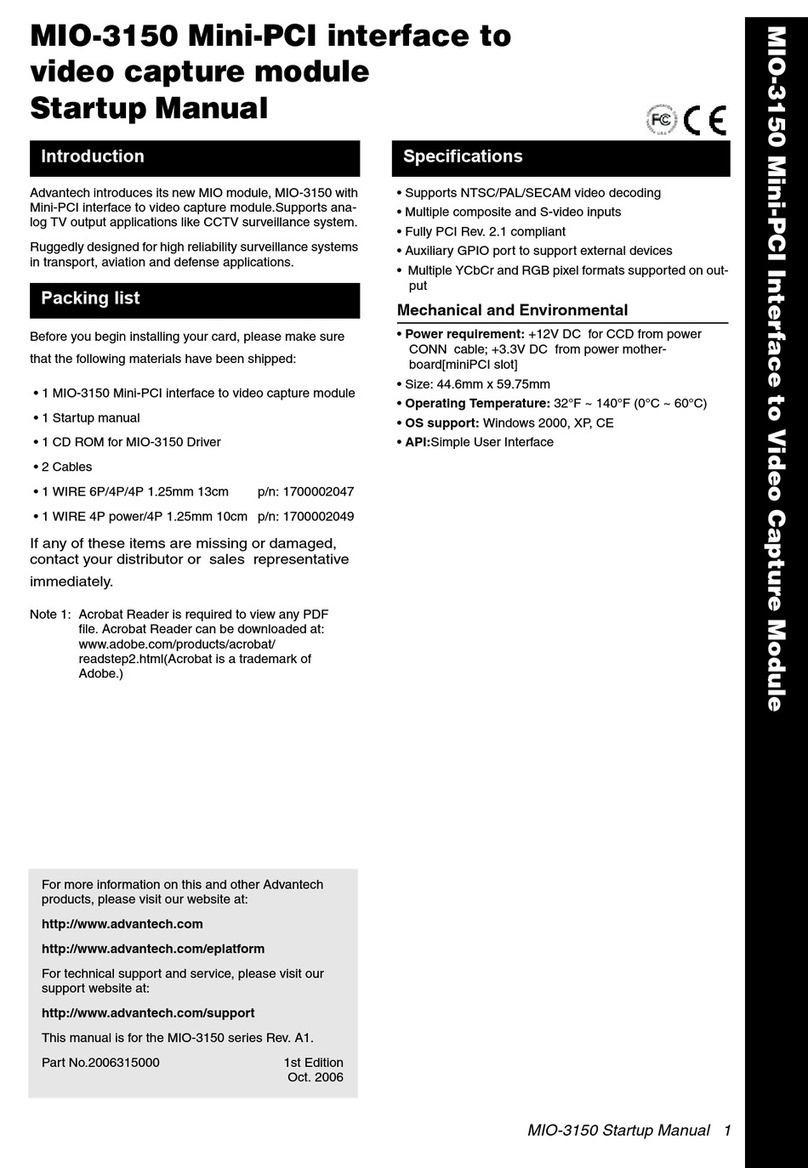
Advantech
Advantech MIO-3150 Installation and operation manual
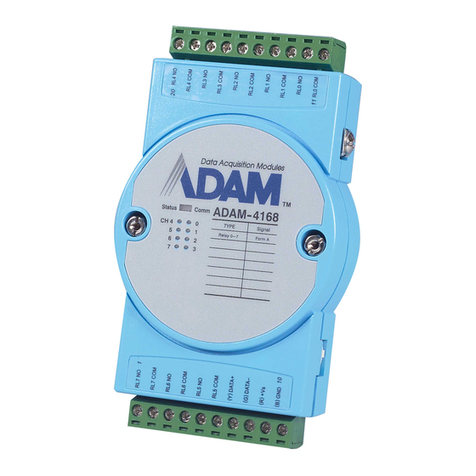
Advantech
Advantech ADAM 4100 User manual
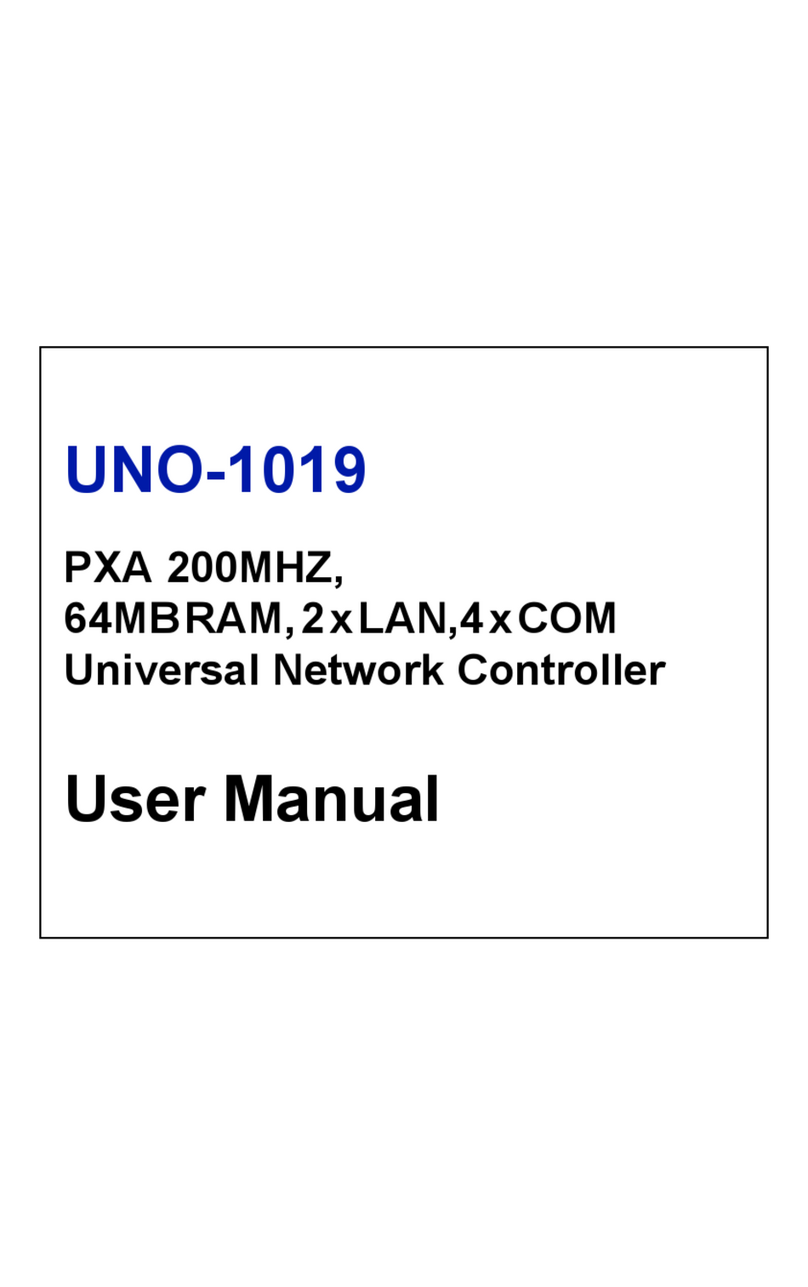
Advantech
Advantech UNO-1019 User manual


